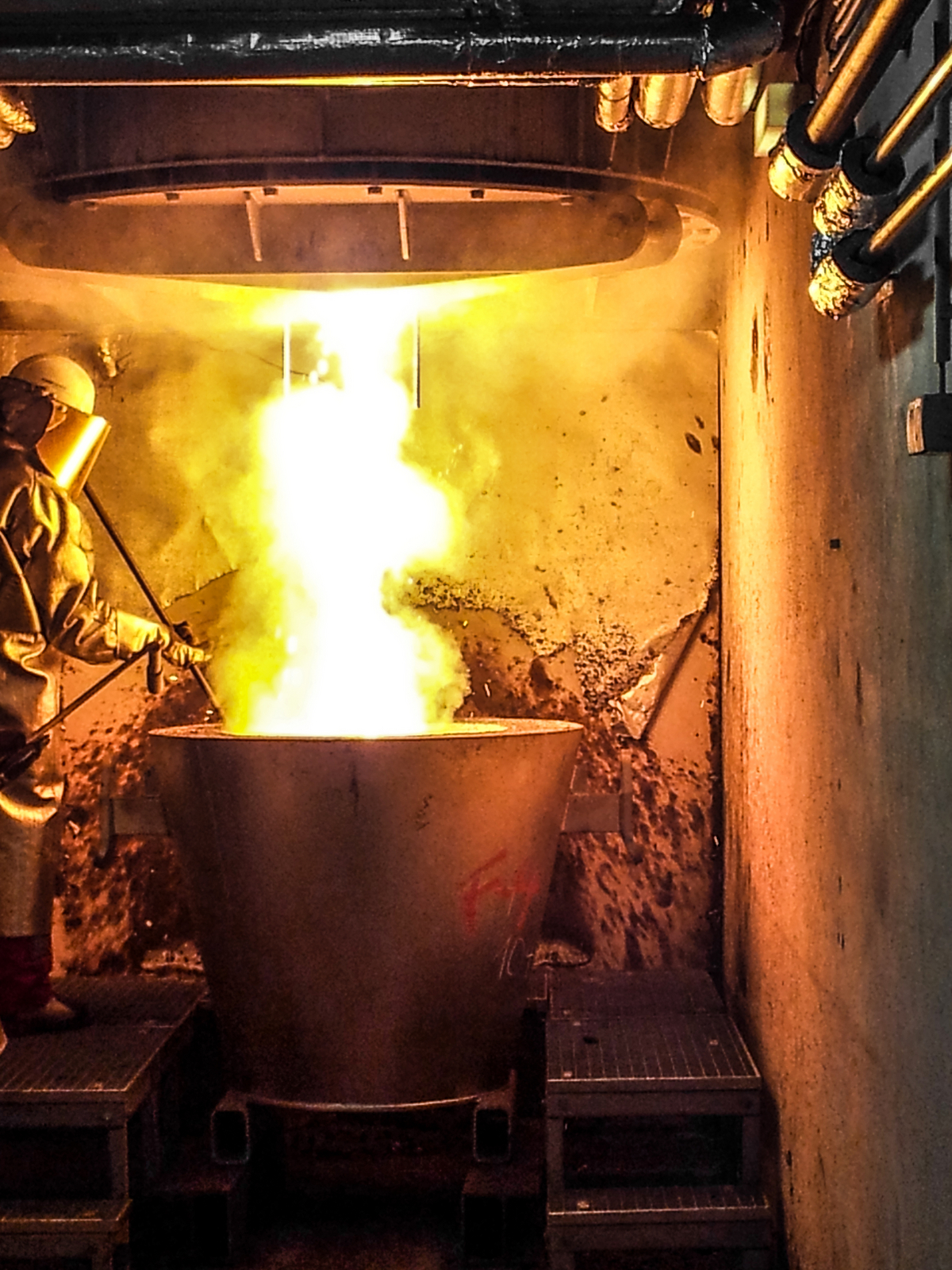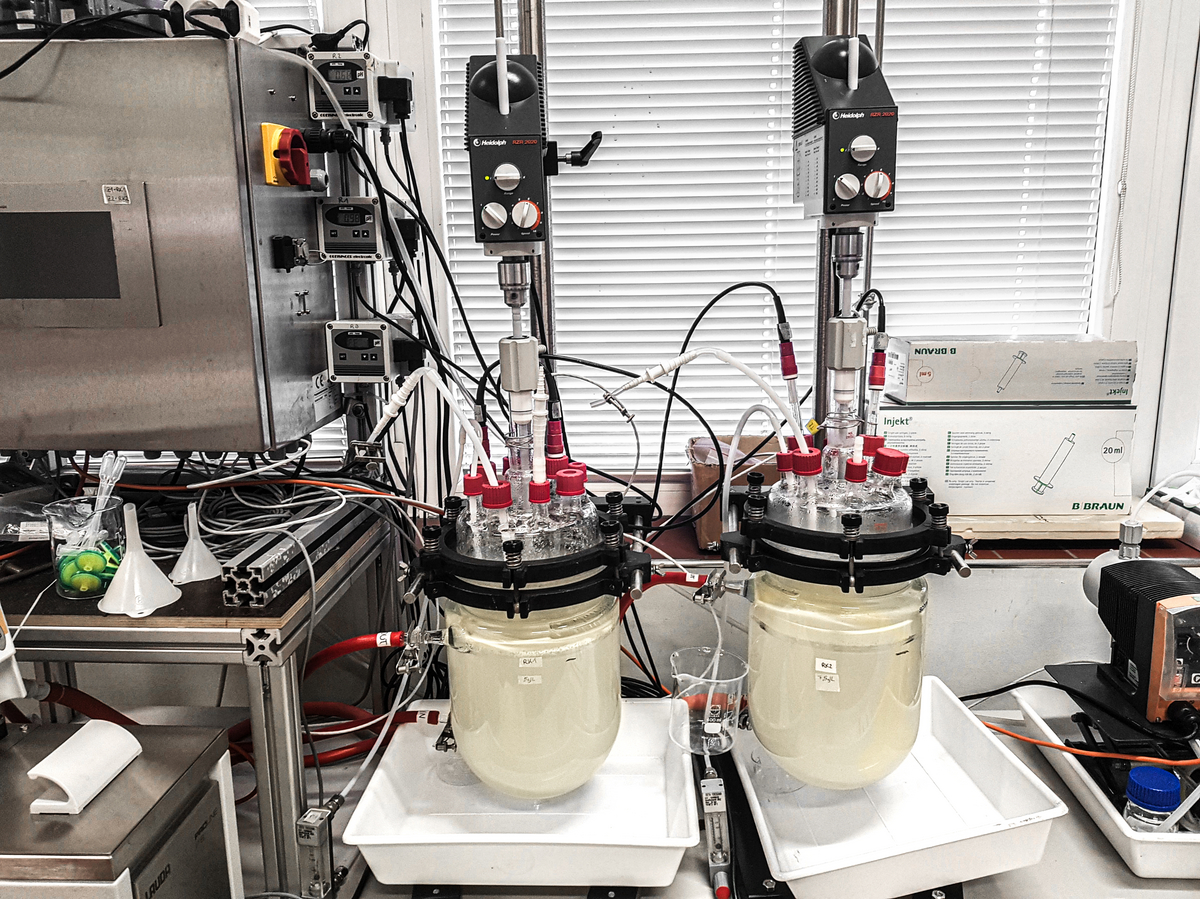Introduction
To reach a sustainable steel industry, circular economy is one of the important pillars. Fine-grained dusts from iron and steelmaking represent secondary resources with considerable amounts of valuable metals inducing the necessity of reusing valuable metal fractions internally (in the steelmaking process) and externally. The current project is focused on metal recovery using pyrometallurgical and biohydrometallurgical treatment. Dust agglomeration for a direct reuse is another field of activity.
The pyrometallurgical RecoDust process aiming on a selective recovery of iron and zinc from steelmaking dusts will be used to investigate the effect of varying zinc input on the qualities of the final products (iron rich RecoDust slag and crude zinc oxide).
A non-pyrometallurgical bioleaching approach using microorganisms for selective metal recovery will also be explored. Fine-grained residues from steelmaking, such as Blast Furnace dust, Blast Furnace casthouse dust, and waste incineration ashes should be treated. The goal is to scale-up the bioleaching process after further optimization in lab-reactors and to operate a small bioleaching pilot plant. The solubilized metals in the leachate should be recovered via precipitation or (bio)-electrochemically with a focus on zinc.
Apart from that, mechanical processing (agglomeration via briquetting) of Basic Oxygen Furnace (BOF) dust should produce stable briquettes. The required binder system and its quantity as well as the optimal equipment type will be defined, and briquetting parameters should be adjusted according to the expected industrial use of the agglomerated products. Mechanical stability (e.g., compressive strength) and metallurgical properties will be evaluated. Beside this, the briquettes will also be evaluated regarding their storage behavior.
Objectives and Motivation
- RecoDust treatment of BOF and EAF dust with strongly varying zinc concentrations (3-30 wt.% zinc)
- Comparative analysis of RecoDust technology with alternative technologies for extraction or sublimation of zinc (FASTMET, Primus®, Waelz)
- Define and optimize an agglomeration process for BOF dust using the concept of hot briquetting and cold-bonded briquetting
- Modification of the briquetting technology to produce stable briquettes for a steel mill internal recycling
- Bioleaching of BF residues and waste incineration fly ashes
- Necessary post-processing efforts for the leaching product from the treatment of steelmaking dusts considering specific requirements for an internal reuse in the steelmaking process (e.g., humidity, phosphorous content)
Methodology
- BOF and EAF dust smelting campaigns with the RecoDust pilot plant (Flash-Reactor)
- Analysis and characterization of the final products (iron rich RecoDust slag and crude zinc oxide)
- Further development of an industrial concept for BOF dust briquetting
- Briquetting tests of BOF dust (hot briquetting and cold-bonded briquetting) with varying dust compositions and definition of suitable briquetting parameters including selection of equipment and technology for briquetting
- Analyse the mechanical and thermal stability of the BOF and EAF dust briquettes (strength, density, etc.) with accompanied spectroscopic and microscopic analyses of the briquettes using light microscopy, scanning electron microscopy and Raman spectroscopy
- Selection and cultivation of suitable microorganisms and bioleaching trials of steelmaking dusts, waste incineration fly ashes, and BOF slag under varying process conditions (temperature, pH value, residence time)
- Zinc recovery from the leachate e.g., via precipitation or a (bio)-electrochemical step
Results and Application
To derive high-quality iron-rich and zinc-rich products from steelmaking dusts using the RecoDust process, knowledge should be available on how EAF dusts with varying zinc contents can be treated. A detailed evaluation regarding possible applications of the RecoDust products for further steel mill internal and external reuse should be available.
An optimized briquetting process for BOF dust using an efficiently working binder is expected. This binder will be used in a further developed cold-bonded briquetting process to produce agglomerates with sufficient mechanical and thermal strength.
Furthermore, an up-scaled bioleaching process for fine-grained steelmaking residues is expected depending on the used feed material. Optimized process parameter ranges for a maximum metal separation rate should be defined and potential reuse possibilities of the separated metals as well as the metal free leached residue from BOF slag and waste incineration ashes are quantified. Knowledge on the required post-processing effort of leaching products from steel mill dusts will be obtained.

 DE
DE EN
EN![[Translate to English:]](/fileadmin/_processed_/4/0/csm_recycle49_weiss_b776401e10.png)

